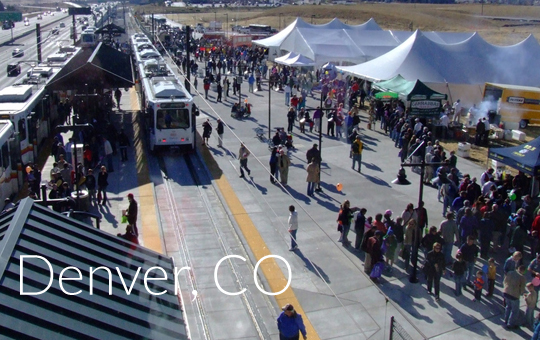
Denver’s ambitious transit expansion plan was almost left at the station

Denver’s amazing bet on an ambitious and comprehensive plan to expand their transportation network a decade ago very nearly crashed upon takeoff. Getting creative while staying committed to the vision helped them weather an economic storm and pull off “a public transit miracle.”
The story of exactly how they kept that vision chugging along was explored in-depth in this terrific piece from National Journal, filling in some of the backstory to our own in-depth profile on Denver’s “can-do” aspirations. As we chronicled earlier this year, Denver had heard from potential employers that the lack of transit connections were hampering the region’s economic development goals, so they came up with a huge regional plan to invest billions in new transit infrastructure. So what happened next? According to National Journal, “Voters agreed to tax themselves for a commuter rail network. Then a budget shortfall almost doomed the whole project. Now it’s on track to completion.”
How they pulled the second half of that is an amazing story.
Three years earlier, Colorado voters had approved a high-profile ballot measure to raise $4.7 billion through sales taxes to build the train system called FasTracks. Now the costs were projected to run well over $6 billion. The money from available tax revenues might allow the rail network to be finished by 2042, internal analysts told the Regional Transportation District (RTD).
…The recession of 2008 hit not long after, which took the scapegoat spotlight off of RTD. But the transit authority was still stuck with a big rail plan and about half the money they needed to build it. They had two options. They could scrap their construction schedule and build one line at a time as tax revenues trickled in. Or they could get creative.
Getting creative is exactly what they did, finding savings and other money from a range of sources, all while staying committed to the full, previously agreed-upon system, rather than doing things slowly and piecemeal.
[Former Mayor and current Governor] Hickenlooper was one of many business and civic leaders in metro Denver who viewed mass transit as the key to making the city a major metropolitan force. They didn’t want Denver to be prominent just in the United States. They wanted to compete with cities throughout the world. You need people movers for that, or businesses won’t locate in your region.
That theme of keeping Denver competitive on a stage bigger than just the West or the United States is one we heard over and over again when writing our own take on Denver’s story earlier this year:
Tom Clark can cite the exact moment in 1997 when metro Denver’s economic leaders became convinced that a more comprehensive rail and bus network was critical to the region’s prosperity. They were talking to executives at Level 3 Communications about a potential relocation, but their prospects were balking. They were afraid that without transit, Denver’s potential workforce was effectively cut in half because of congestion on I-70, the main east-west interstate artery.
“They were the catalytic piece of us deciding that we really had to get serious and get transit back on the ballot again,” said Clark, CEO of the Metro Denver Economic Development Corporation. “It was one of those a-ha moments in your life where you just go ‘Wow, this has real economic implications.’”
Denver’s story — whether of “how” they dreamed it up or how they kept it from going off the rails — is one that a handful of metro areas are keen on replicating today. Don’t miss that full story from National Journal.



